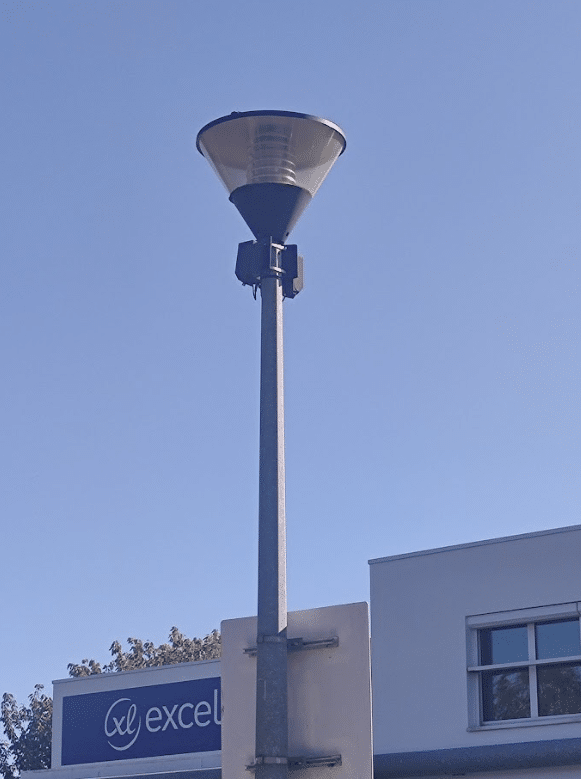Smart parking has become a crucial issue for modern cities, as they seek to optimize the use of urban space, reduce congestion and minimize their ecological footprint. Curb management technologies play a key role in this transition, in particular with the use of a parking sensor, enabling more efficient, real-time management of parking spaces.
What are the key criteria to consider when evaluating smart parking technologies? What parking sensor technologies are available?
6 key criteria for evaluating parking sensor technologies

When evaluating smart parking technologies, we need to take into account a number of criteria to ensure an effective solution tailored to the specific needs of cities and users. Here are the main criteria:
Precision and Reliability
The accuracy and reliability of detection technologies are essential for effective parking management. Reliable technology reduces the number of false positives and negatives, ensuring optimum use of available space. Parking sensors are particularly appreciated for their high precision.
Privacy policy
Taking the privacy criteria into account is essential for the sensor to be simple to install and to ensure customer privacy security.
Implementation and maintenance costs of a parking sensor
Initial installation costs and recurring maintenance costs are crucial factors. A solution must be economically viable over the long term if it is to be adopted on a large scale. Parking sensors, for example, can represent an average investment, but offer a good balance between cost and performance.
Easy integration
The ability to integrate with existing and future systems is essential to ensure a smooth transition and scalability of the solution. Technologies must be compatible with current and future smart city infrastructures. Parking sensors generally integrate well with various management systems.
Scalability
The solution must be able to adapt to an increase in demand without compromising its performance. Scalability is essential for large, ever-expanding cities. Due to their modular nature, parking sensors offer good scalability.
Environmental impact
Smart parking technologies should also help to reduce the ecological footprint of cities by cutting greenhouse gas emissions through optimized management of traffic and parking flows. By reducing the time it takes to find available parking spaces, parking sensors play an active role in this reduction.
Comparison of parking sensor technologies

Comparative table of parking sensor technologies
| Technology | Number of places per sensor | Vehicle type distinction | Precision and Reliability | Installation costs (€/unit) | Purchase cost (€/unit) | Maintenance costs (€/year) | RGPD compliance? | Easy integration | Scalability | Environmental impact |
|---|---|---|---|---|---|---|---|---|---|---|
| Parking sensors | 1 | No | 85% | 80 – 100 | 100 – 200 | 20 – 50 | Yes | Low (Complementary communication devices) | Low | Top |
| LIDAR sensor | 10-50 | Yes | 99% | 10 000 – 15 000 | 5 000 – 10 000 | 100 – 200 | Yes | Low | Average | Top |
| RADAR sensors | 5-10 | No | 90% | 10 000 – 15 000 | 2 000 – 5 000 | 50 – 100 | Yes | Low | Average | Top |
| Video surveillance cameras | 10-100 | Yes | 99% | 10000-15000 | 300 – 800 | 50 – 100 | Not natively | Low | Average | Top |
| Input/output counting cameras | N/A | Variable | 95-99% | 3 000 – 6 000 | 1 000 – 4 000 | 50 – 100 | Not natively | Average | Average | Average |
| Cocospots (Cocoparks technology) | 10-100 | Yes | 99% | 150 – 300 | < 800 | 50 – 100 | Yes | High | High | Low Solar Impulse label |
Details of smart parking sensor technologies
Ground sensors for smart parking
Flush-mounted sensors

Parking sensors are magnetometers installed in parking spaces to detect the presence of a metal object above the space. They offer medium accuracy and are particularly effective for structured parking. The cost of implementing a parking sensor is usually between 100 and 200 dollars per unit, with an annual maintenance cost of between 20 and 50 dollars.
Ground-mounted sensors

It’s literally the same technology as flush-mounted sensors, except that these are bonded. Installation is faster, but the sensor protrudes from the surface, posing problems for pedestrians.
Precautions to be taken with ground sensors
Although some companies continue to produce ground sensors, such as Sissycom, Tagmaster and Urbiotica, the major manufacturers have now abandoned this old technology. This is particularly true of Bosch and Nedap, the main manufacturers until 2024. Companies such as SmartGrains and OneSitu have also ceased trading, due to the difficulty of supporting this technology, which is ultimately very cumbersome to install and maintain.
LIDAR

LIDAR uses lasers to create 3D images of the environment, enabling extremely precise detection of vehicles. This technology is particularly useful in complex, dynamic environments. LIDAR implementation costs range from 5,000 to 10,000 dollars, with annual maintenance costs of between 100 and 200 dollars. LIDAR can be well integrated into advanced traffic management systems. It requires a lot of energy to function properly.
RADAR technologies
RADAR technologies use radio waves to detect objects. They offer high precision and reliability, with implementation costs of between 2,000 and 5,000 dollars, and annual maintenance costs of between 50 and 100 dollars. RADAR is particularly useful in environments where weather conditions can affect other types of sensor.
Videoprotection or video surveillance cameras
Video surveillance cameras are helpful in monitoring parking areas and detecting vehicles. They are relatively less expensive to install and maintain, with an implementation cost of 300 to 800 dollars per unit and annual maintenance costs of 50 to 100 dollars. However, their accuracy can be average, especially in low-light conditions. They are easy to integrate into existing systems and offer average scalability. Read our full article on video surveillance here.
Players such as HIKVISION and Dahua Technology are among the leading camera suppliers.
Input/Output Counting Cameras

These ANPR-type cameras are installed at parking lot entrances and exits to count vehicles. They are relatively inexpensive to install and maintain, but offer medium to high accuracy, depending on the supplier. These cameras cost between 1,000 and 4,000 dollars to implement, with annual maintenance costs of between 50 and 100 dollars.
They are easy to integrate and offer medium scalability, ideal for parking lots where vehicle flow is the main management criterion. It should be borne in mind that they require regular rebasing of the count, which can, in some cases, be very time-consuming for operators.
Who are the players deploying smart parking solutions?

Smart parking players range from major civil engineering or telecoms integrators, to sensor suppliers, to the few technological specialists in the field. Companies such as Orange and Bouygues have developed their offer through takeovers. When it comes to these issues, which require real technological know-how, it’s essential to surround yourself with a partner who has a thorough understanding of the technological challenges and the parking business.
Players such as Orbility, SkiData, Flowbird and Easypark specialize in parking payment. This does not necessarily provide a 360-degree view of parking, which fully optimizes the interests of the infrastructure manager. Hésion, for its part, is a French player specializing in underground parking lots.
Cocoparks deploys the benchmark smart parking or curb management solution for cities, campuses, hospitals and businesses, thanks to a revolutionary, integrated technology. Cocoparks’ vision of the business is based on the highly complex management of urban city centers. This enables the Cocoparks platform to adapt to almost any smart parking situation.

In conclusion
The choice of smart parking technology depends on various factors specific to the needs and constraints of each urban environment. Key criteria such as accuracy, cost, ease of integration, scalability and environmental impact must be carefully evaluated to select the most suitable solution. The latest embedded AI technologies are profoundly transforming the parking sensor industry.


